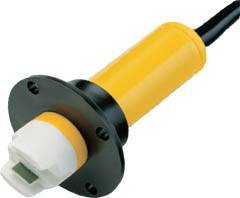

The same has been depicted in the figure-2. It consists of thermistor, platinum hot wire and electronic control circuit. The Hot Wire type of MAF sensor is most common and most popular. Hot Wire MAF Sensor Mass Airflow Sensor(MAF sensor) working.The information will help for the following.įollowing are the types of Mass Airflow sensors: The Mass Airflow Sensor (MAF sensor) converts amount of air available in the engine into voltage signal.Īir volume information is essential to calculate load in the ECM (Engine Control Module). Throttle body directly in intake air stream. As shown it is placed between air cleaner and The figure-1 depicts position of Air Flow Sensor. Mass Airflow Sensor-MAF sensor construction Mass Airflow sensor and Oxygen Sensor are used together toĬontrol air/fuel ratio accurately in the engine. In each of the cylinder compare to volumetric flow sensors. MAF sensors are more useful and more appropriate to determine quantity of air intake The air mass details are required in order to balance correct amount ofĪs air density depends on temperature, altitude as well as application of forced induction, It mentions advantages and disadvantages of MAF sensor over Vane meter.ĭefinition: The sensor used to determine mass flow rate of the air is It mentions Mass airflow sensor(MAF sensor) construction and working of Mass airflow sensor(MAF sensor).

This page describes basic function of Mass airflow sensor (i.e. Now you have the tools you need to start creating your DAG building complex data pipelines in! If you are interested in learning more, see Airflow: how and when to use it (Advanced) for more information on operators, structuring DAGs, and scaling issues with Airflow.Mass airflow sensor basics | MAF sensor working
#Airflow sensor how to#
How to build a DAG and set task relationships.We reviewed when to use Airflow (when your pipeline needs to support fan-in/-out), how to build a DAG, why DAGs are useful, and about various Airflow components. In the simple DAG example previously described in the DAGs section, the list of active partners was pushed to the xcom table by the first task, and the second task pulled the partner list from the xcom table and set the list as an Airflow variable. XComs can be “pushed” (sent) or “pulled” (received) between tasks.įor example, you may need to push the return value of one task to the xcom table so that you can pull the value from the xcom table in the next task and use it as a parameter. This intercommunication is done by an xcom. Ideally, tasks are independent of one another, but at times, that is impossible to do and tasks need to communicate.


 0 kommentar(er)
0 kommentar(er)
